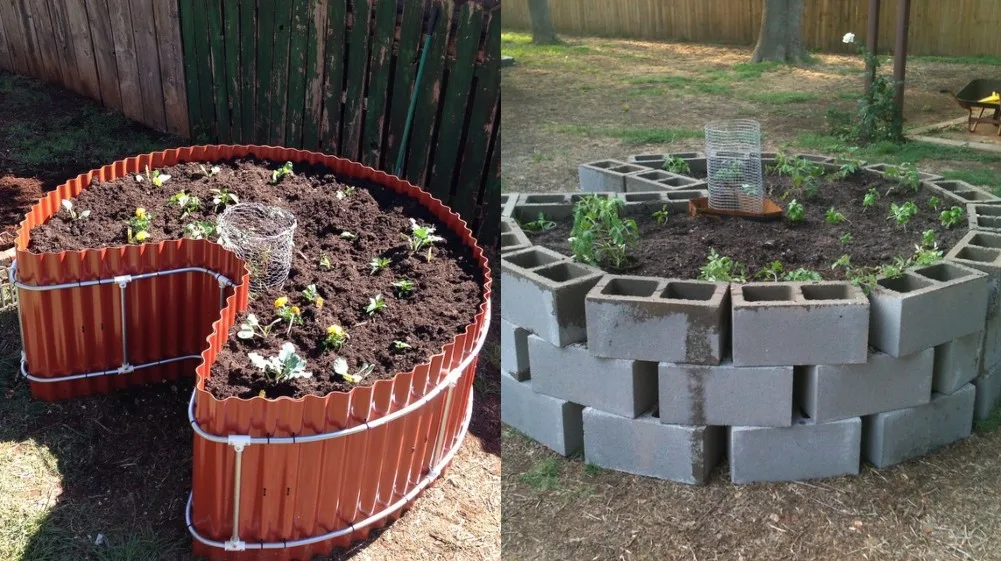
A keyhole bed can be a great way to maximise space and productivity in an organic garden.
A keyhole garden is a type of garden bed commonly utilised in permaculture design. It can be especially useful in areas where water and nutrients are in short supply, but it is an idea that can be applied in almost any climate zone.
What is a Keyhole Garden?
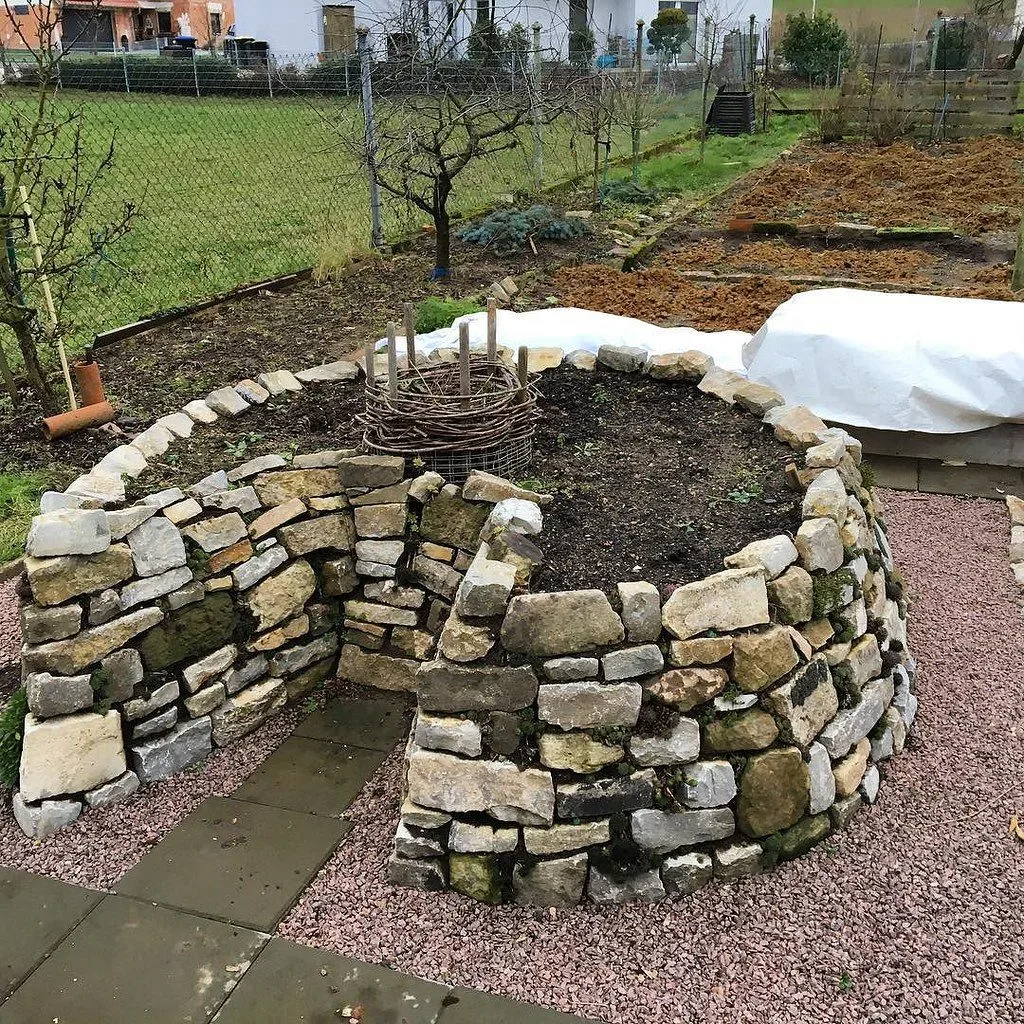
A keyhole garden is a large, raised garden bed. Keyhole gardens can come in a range of shapes, sizes, and depths, though commonly they have circular or curving forms.
The name comes from the idea that an access path to the heart of the bed looks a little like a keyhole when viewed from above. When it comes to the shape of the bed around this keyhole, there are no restrictions.
At their simplest, keyhole gardens are simply raised beds with an access path leading to a space to stand in at their heart.
But many keyhole gardens also include a central composting area and watering point in the middle.

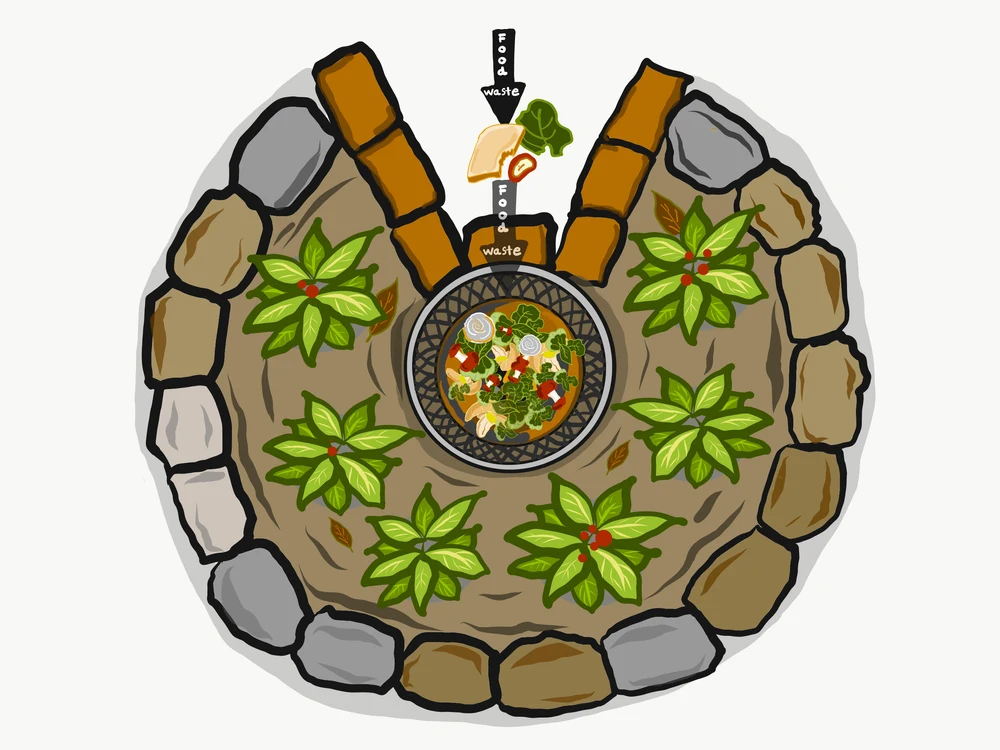
Why Make a Keyhole Garden?
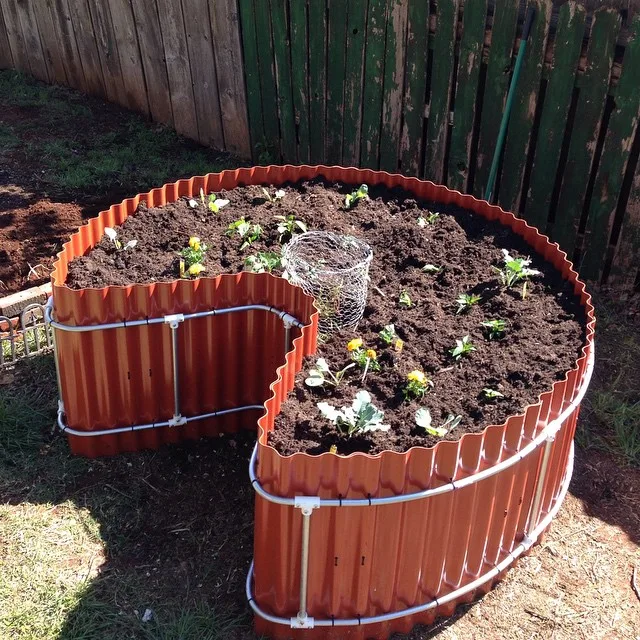
One of these raised beds can be used to grow a substantial amount of food. It maximises the yield that can be obtained from a given amount of space.
Any keyhole garden can maximise yield by minimising pathway, and maximising the amount of usable growing space.
When making any growing area, it is important to make sure that the gardener can easily reach all areas without standing on the beds. Outer edges of a keyhole garden can be accessed from around the perimeter, while the pathway that leads to the centre gives access to the inner portions of the bed.
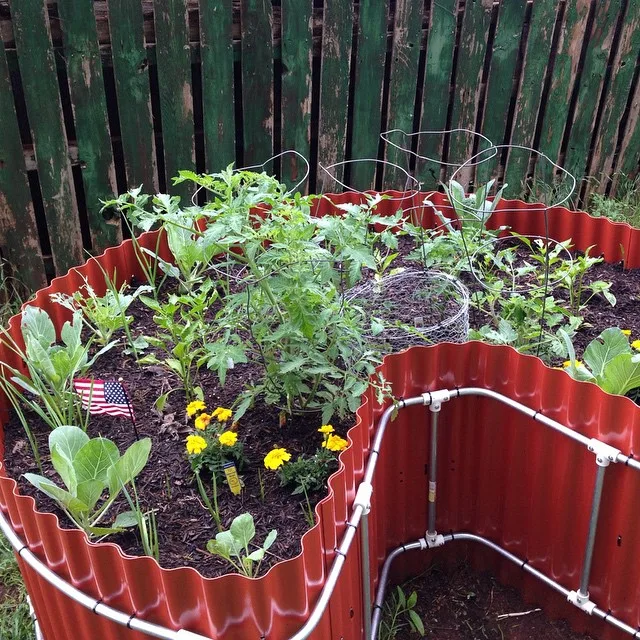
The shape of a keyhole garden also potentially maximises yield by increasing the amount of edge. Edges are the most productive parts of any ecosystem. So planning beds to maximise edge is a key concept in permaculture design.
In keyhole beds that incorporate a composting area at their heart, yield is also increased by the high-fertility provided by the compostable materials added at the centre. Since water is also added through the central composting area, one of these beds can also reduce the water use in a garden.
This type of keyhole bed is particularly suited to arid climate zones, where water is in short supply. Though it can also be beneficial in areas with higher rainfall, where soil fertility on site may be less than optimal.
One final thing to think about is that keyhole gardens can be beautiful spaces as well as productive ones. By making gardens with more intricate, complex and organic shapes, you can create an aesthetically pleasing garden design.
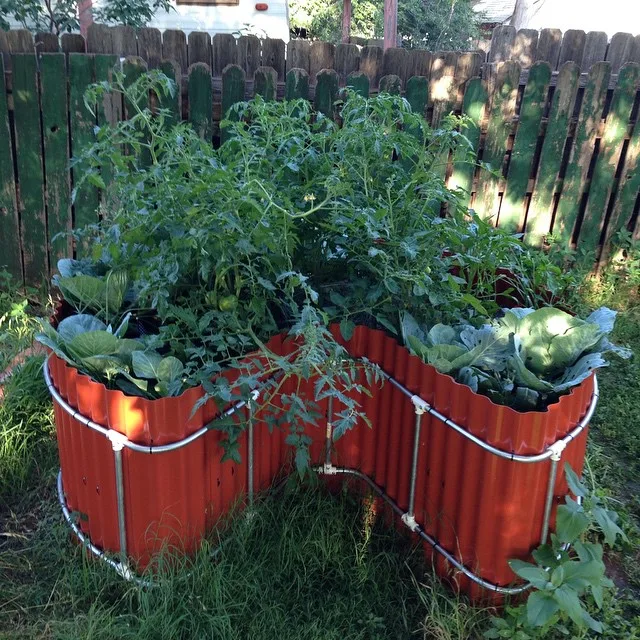
Keyhole Garden Design
The first stage in creating a keyhole garden is determining details of the design. It is important to consider the size and shape of the bed you will build.
Early in the design process, you will need to decide whether the keyhole shapes will be for access only, or whether your keyhole garden will have a central compost bin.
Keyhole beds could also be designed to allow for a larger central space, which could be used as a seating area, for example.
A keyhole garden should always be designed with reference to your own particular garden. Think about the climate and micro-climate conditions and the structures of your site when deciding on shape, size and exact positioning.
Marking Out Your Keyhole Garden Design
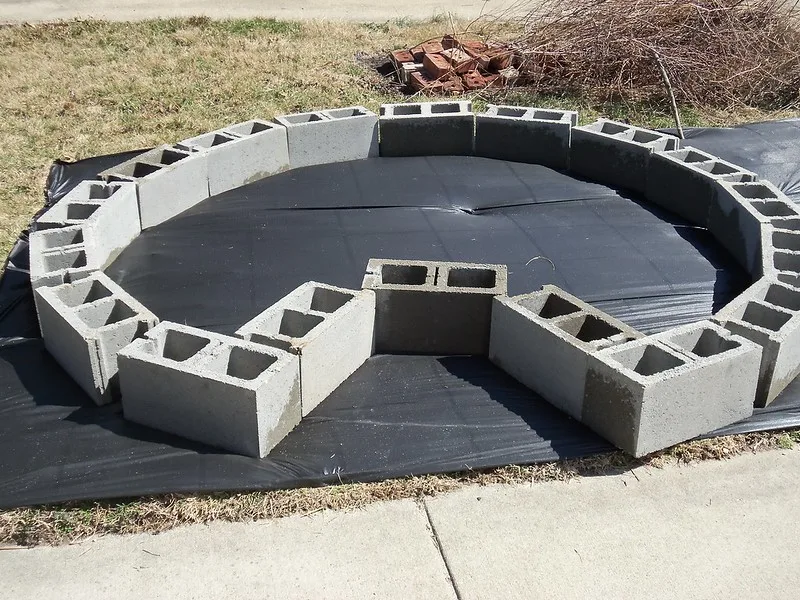
Once you have decided on a keyhole garden design, the first stage is to mark out your design on the ground.
A typical, circular keyhole bed layout that works well involves making a circle around 2m in diameter. This circle will mark the outer edge of your garden. You can create this circle by placing a stake or cane at the centre, with a line of twine attached to it that is 1m long. Turning in a circle, keeping the twine taut, you can mark out the perimeter.
Once you have the outer edge of your garden marked, you can mark out the pathway, and the central area – making sure that the path is wide enough to allow access.
If your keyhole garden is a different shape, or irregular in shape, then you can mark out key points around the boundary with stakes or canes, which can make it easier to stick to your plans when actually building your garden.
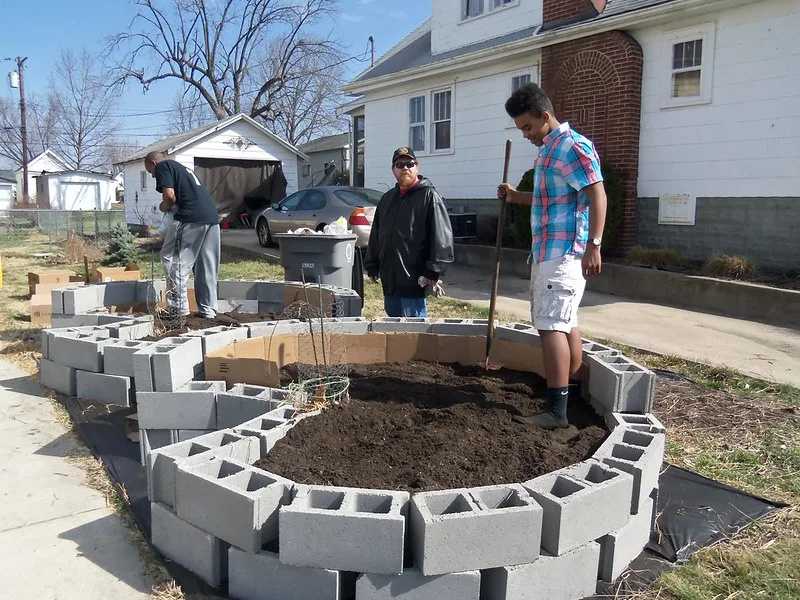
Marking the layout might simply involve scoring the earth. But you can also mark the boundary using chalk or flour, to leave lines on the ground. You can also mark the boundary using twine. Or you can use something like a garden hose laid out to create the desired shape.
Bed Edging For a Keyhole Garden

Once you have marked out your design, it is time to create the bed edging. Keyhole beds without a central compost bin need not be deep. They do not necessarily have to be raised up much off the ground. But however high or deep your beds will be, bed edging can help keep things orderly and neat.
Of course, before choosing your bed edging, you will need to decide how deep to make your keyhole garden. This will determine which material choices are open to you for edging your garden.
The circular garden 2m in diameter mentioned above is typically made as a raised bed, at a height of around 1m (or a comfortable depth for easy gardening). This depth of bed is ideal if you plan to create a central composting bin at the heart of your keyhole garden.
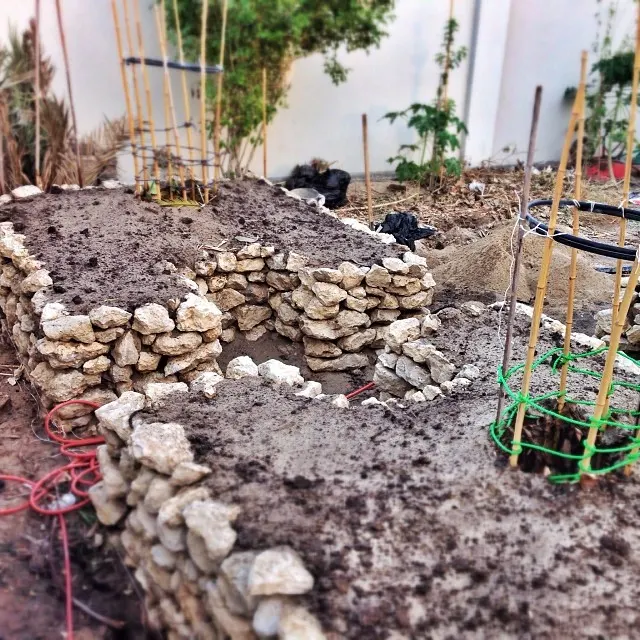
There are plenty of different materials that can be used to make the edging for any keyhole garden. Generally speaking, it is a good idea to choose locally available, natural materials.
For example, you might be able to source rocks or stones from your property, use clay/ adobe/ earth bags, or use branches or logs harvested from your land. For more eco-friendly, natural or reclaimed bed edging ideas, check out this article:
45 Creative Garden Bed Edging Ideas
Simply build up the edging of your keyhole garden until it reaches the required height.
Making a Central Compost Bin For a Keyhole Garden
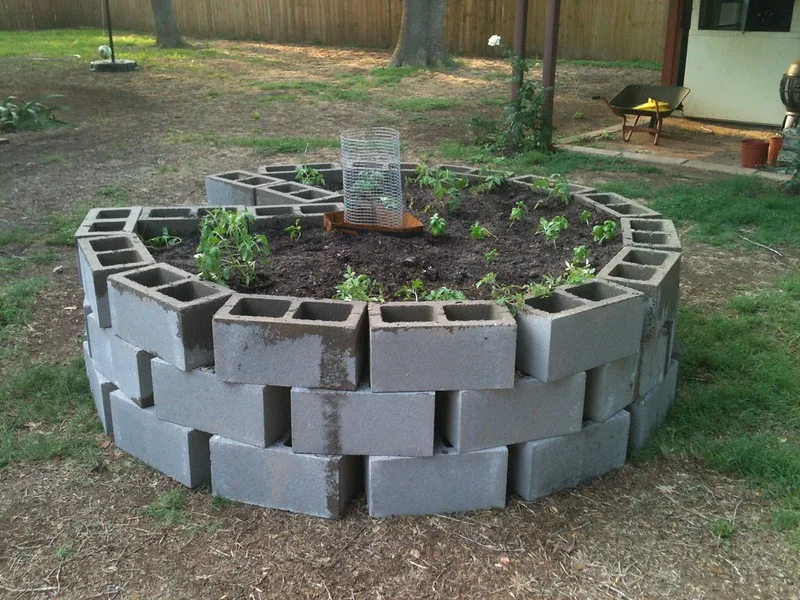
If you have decided to create a central compost bin at the heart of your keyhole garden, this is also the time to construct this element.
At the centre of the circle, add a composting basket. This can be made from sticks placed vertically, and wire or mesh, or can be a simple woven basket or other receptacle. Place rocks in the base of this basket for stability and drainage.
The sides of the composting bin should be open to the growing area around it. As this will allow water, nutrients and earthworms etc. to easily pass through. Make a cover/lid for the compost basket so it is protected from drying out (or becoming waterlogged during heavy rains).
Pathways for a Keyhole Garden
At this building stage, it could also be a good idea to think about what material you might like to use to create the pathways around and into your keyhole garden. Remember that you will likely be walking on these paths relatively frequently. If you don’t add a ground cover, these paths could become muddy in wetter areas.
As with the bed edging, there are a range of different materials that you could consider using to make your garden paths. You might, for example, consider making bark or wood chip paths. You might lay down gravel, or a hard paving such as stone, tiles etc..
If you decide to keep or sow grass, around your garden, remember that the layout may make this difficult to mow and weeds may become a problem.
The Growing Medium in a Keyhole Garden
Once you have built the structure for your keyhole garden, it is time to build up the growing medium. I would recommend that you build up your growing medium using the ‘lasagna’ method.
You can simply fill it with compost/ soil. But I definitely think it is a good idea to consider creating layers of organic matter. (Brown, carbon rich material and green, nitrogen rich material). Then to add compost/ soil only for the top layer.
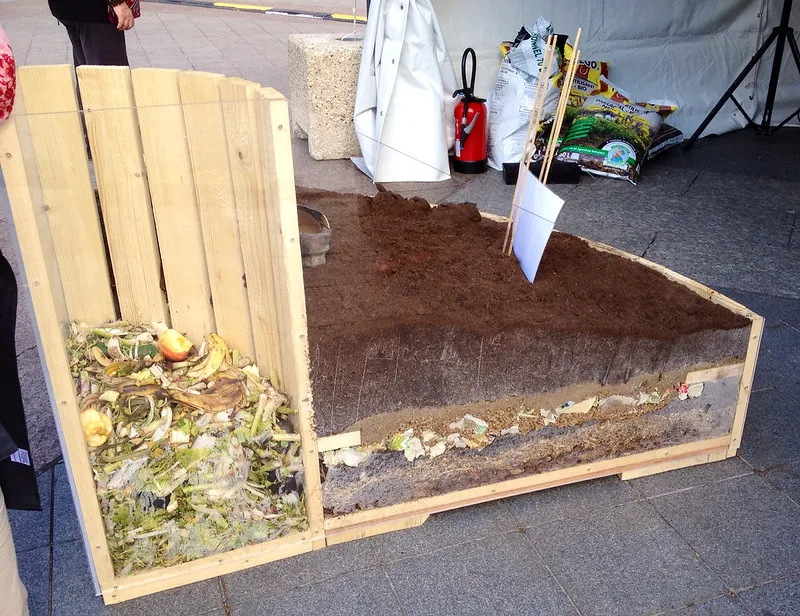
Add sticks and twigs to the bottom. And then further layers of other organic matter from the surrounding area. Then top with the best soil/ compost you have.
The benefit of using this method is that it will help to create a garden high in fertility. It should also be more moisture retentive. And is far cheaper if you do not need to import larger quantities of compost/ topsoil to start your garden.
As the materials compost in place, the level of the bed will drop. But you can keep it healthy and productive through regularly top dressing and mulching. Mulch with compost, well-rotted manure, or other organic materials.
The top of the growing area should slope away slightly from the central composting basket if you have included this element in your keyhole garden design.
Planting Up and Using a Keyhole Garden
When choosing plants to place in your keyhole garden, you should take into consideration:
- The climate, micro-climate and local conditions.
- The specific needs of individual plants you would like to grow.
- Your own preferences (growing what you actually like to eat).
Remember, when choosing plants for your keyhole garden, that it is best to create diverse polycultures of plants. They can attract beneficial wildlife and the diverse plants can aid one another in a range of different ways.
You can plant up your keyhole garden right away. Though of course, you will have to think about planting that is appropriate to the season in your climate zone. It is best to create some cover for the bed, even if you cannot sow crops right away. So consider a winter hardy cover crop if you cannot grow edible produce right away.
If you have created a smaller keyhole bed, you could also consider creating a cover. This could extend your growing season and would potentially allow you to grow even grow food year round in your new garden.
Water seeds and young seedlings directly, but once roots are established, if you have added a central composting area, add rainwater or gray water to this central basket along with all your compostable waste.
Otherwise, water this garden as you would any other garden bed. Remember, using drip irrigation and other methods, and mulching well, can help to reduce water use. Always rely on rainwater whenever possible.
Is a Keyhole Garden Right For You?
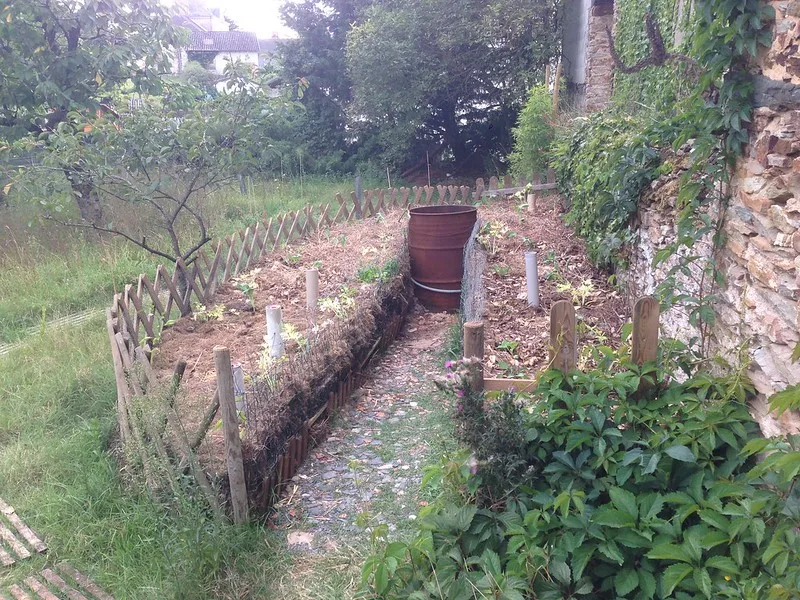
A keyhole bed is an adaptable idea that can be tailored to your specific site and your specific needs. While there are some general guidelines when it comes to their creation, there are few hard and fast rules. You can alter this idea in imaginative ways to suit you and your garden.
So if you are planning new growing areas, a keyhole garden could be an interesting thing to consider. It could be an interesting way to make the most of your space. And a good way to create a beautiful and productive garden.

Get the famous Rural Sprout newsletter delivered to your inbox.
Including Sunday musings from our editor, Tracey, as well as “What’s Up Wednesday” our roundup of what’s in season and new article updates and alerts.

